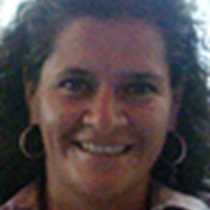Fernandina and Isabela
Our expedition brought us to the westernmost islands of this archipelago, Isabela and Fernandina, the youngest of the group. Common dolphins and whales kept us running around the ship before breakfast. It was very nice to realize that one of the whales we saw was an immature blue, which is not very common in these waters. This area of the archipelago is bathed by the cold undercurrent of the Cromwell Current, which is very rich in nutrients and responsible for the marine wildlife found in the Galápagos.
The scenery of the shield-shaped volcanoes made it easy for our guests to understand what geological time means and how erosion shapes the landscapes of our planet. Ecuador Volcano has already submerged into the water, letting us observe the volcano from the inside as we crossed the equatorial line.
Our Zodiac ride at Punta Vicente Roca, along the coastline of Isabela Island, was very enjoyable, thanks to the unique species that inhabit this area: Galápagos penguins, flightless cormorants, marine iguanas, Pacific green sea turtles and the wonderful ocean sunfish (Mola mola).
Back on board we got ready to see the same creatures again, but this time underwater. Having the opportunity to swim with the sea turtles and tropical fish of the area made this experience the best snorkeling so far during this week on board the National Geographic Endeavour.
In the afternoon, the ship was repositioned in Punta Espinoza, Fernandina Island. An island that takes us back to very beginning of time, being the youngest of the chain, Fernandina is around 150,000 years old—in geological time it’s considered a baby.
During the walk we talked about the very early processes of life taking place. The formation of soil and the simplicity of the ecosystem, together with its fragility, made us think that this place well deserves to be conserved so future generations of life cycles won’t be altered by humans and its evolutionary processes can continue … the true power of nature!




